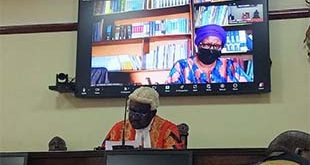
Kampala, Uganda | THE INDEPENDENT | Only five per cent of Ugandans are aware of a toll-free number to call in case of a medical emergency, results of a new survey done by Twaweza show.
According to their report released on Thursday, the majority of Ugandans further reported not knowing an ambulance to call to their rescue in case of need. The survey which aimed to establish citizens’ opinions and experiences on emergencies and emergency medical services covered 3,000 respondents through in-person interviews conducted between September and October 2021.
Marie Nanyanzi, the Lead Researcher based at Twaweza reveals that they found, one in eight households had experienced an emergency six months before the survey but only one per cent of the respondents reported having called an ambulance for help.
The majority reported having either driven themselves, walked or used a Bodaboda to a health facility.
Having done the survey shortly after Uganda experienced the second wave of COVID-19, which had a lot of people get critical disease, instead of the 911 medical emergency number, 3 per cent of respondents provided varying numbers which the Ministry of Health issued to report suspect COVID-19 cases.
When further probed to understand whether Ugandans are aware of the availability of ambulance services, only 19 per cent responded in the affirmative that they know of an ambulance that they can call to their village.
Nanyanzi says even as the government runs an emergency health service with a fleet of ambulances distributed throughout the country, the primary provider of ambulance services mostly known by citizens is members of parliament.
However, these findings come at a time when the Ministry of Health is revamping emergency medical services in the country having passed a policy and made proposals to abolish the kind of ambulances procured by Members of Parliament.
In an earlier interview with URN, Health Minister Dr Jane Ruth Aceng indicated that they were phasing out such ambulances as they are mere transport vehicles which don’t provide the service needed in case of an emergency but risk creating more trauma to the patient.
But, before this happens and as MPs remain the biggest provider of the service known by the population, Twaweza recommends that ambulances procured by MPs should be analysed to ensure that they are fit to offer emergency services. They propose that guidelines and circulars are developed for MPs to follow to be allowed to take part in emergency care.
But Dr Juliet Nabbanja, the Assistant Commissioner in charge of Clinical Services in the Ministry says that they are revamping their fleet having already procured 250 ambulances.
She says they also plan to procure more by next year which will be stationed at the regional referral hospitals with a clear dispatch plan which the public will be made aware of.
However, getting to the health facility is not the only challenge with emergency services as respondents in this Sauti Za Wanaichi survey say that when causalities get to the health facilities, it takes them up to almost an hour before being attended to.
Results show the average waiting time for those seeking help from health facilities in an emergency is 43 minutes. 12 per cent of the respondents reported not being attended to within an hour of arrival. This has significant implications for a victim’s survival and response to care.
Nanyanzi further says they found distinct inequalities in access to care where 81% of their respondents said health workers at private facilities treated them better than their counterparts in public hospitals.
Citizens were more positive about triage provided by private facilities than that provided at public facilities. 27 per cent say triage at public facilities is good compared to 79 per cent at private facilities.
****
URN
 The Independent Uganda: You get the Truth we Pay the Price
The Independent Uganda: You get the Truth we Pay the Price


